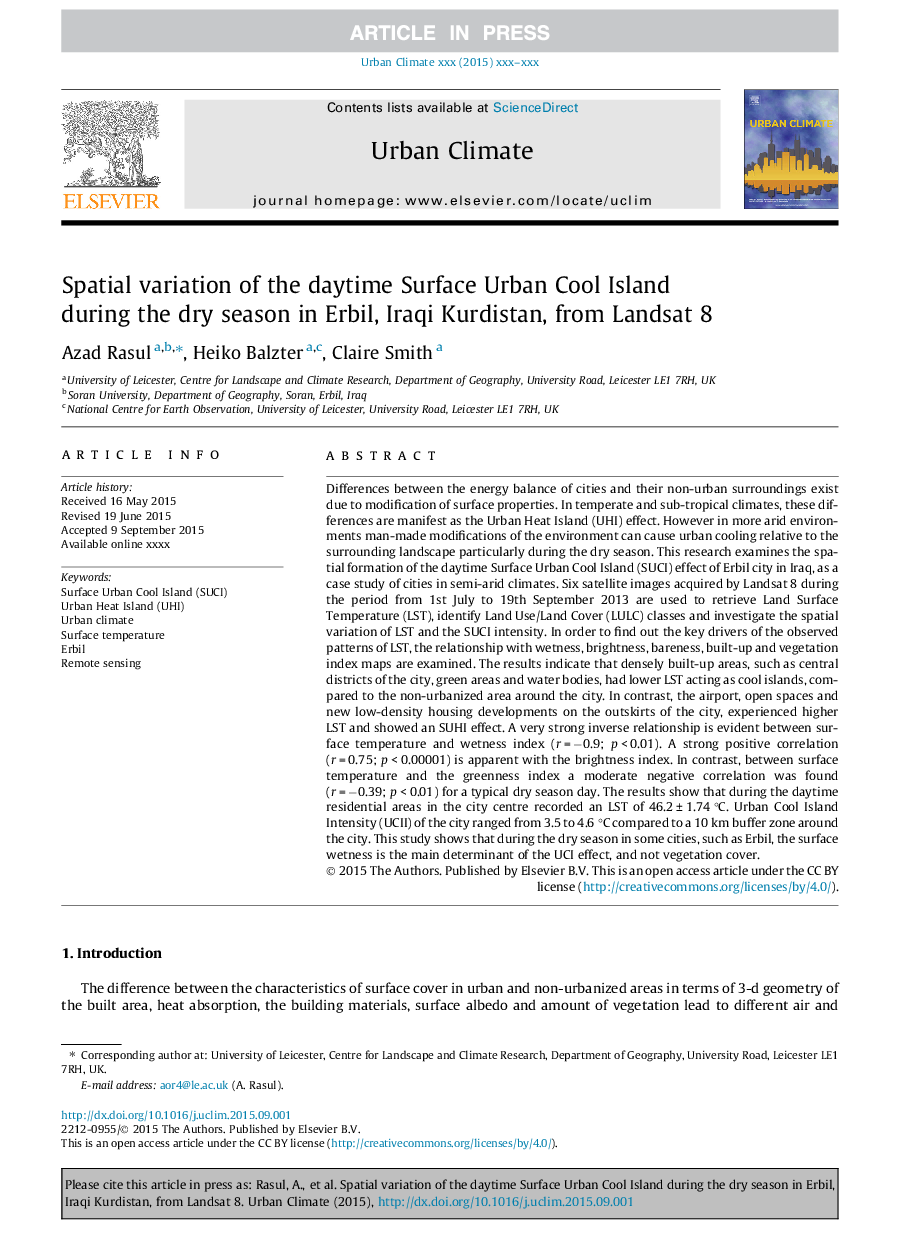| کد مقاله | کد نشریه | سال انتشار | مقاله انگلیسی | نسخه تمام متن |
|---|---|---|---|---|
| 10260246 | 163462 | 2015 | 11 صفحه PDF | دانلود رایگان |
عنوان انگلیسی مقاله ISI
Spatial variation of the daytime Surface Urban Cool Island during the dry season in Erbil, Iraqi Kurdistan, from Landsat 8
ترجمه فارسی عنوان
تنوع فضایی جزیره ای سرد در منطقه خشکی دریایی در طول فصل خشک در اربیل، کردستان عراق، از لندست 8
دانلود مقاله + سفارش ترجمه
دانلود مقاله ISI انگلیسی
رایگان برای ایرانیان
کلمات کلیدی
موضوعات مرتبط
مهندسی و علوم پایه
علوم زمین و سیارات
علوم زمین و سیاره ای (عمومی)
چکیده انگلیسی
Differences between the energy balance of cities and their non-urban surroundings exist due to modification of surface properties. In temperate and sub-tropical climates, these differences are manifest as the Urban Heat Island (UHI) effect. However in more arid environments man-made modifications of the environment can cause urban cooling relative to the surrounding landscape particularly during the dry season. This research examines the spatial formation of the daytime Surface Urban Cool Island (SUCI) effect of Erbil city in Iraq, as a case study of cities in semi-arid climates. Six satellite images acquired by Landsat 8 during the period from 1st July to 19th September 2013 are used to retrieve Land Surface Temperature (LST), identify Land Use/Land Cover (LULC) classes and investigate the spatial variation of LST and the SUCI intensity. In order to find out the key drivers of the observed patterns of LST, the relationship with wetness, brightness, bareness, built-up and vegetation index maps are examined. The results indicate that densely built-up areas, such as central districts of the city, green areas and water bodies, had lower LST acting as cool islands, compared to the non-urbanized area around the city. In contrast, the airport, open spaces and new low-density housing developments on the outskirts of the city, experienced higher LST and showed an SUHI effect. A very strong inverse relationship is evident between surface temperature and wetness index (r = â0.9; p < 0.01). A strong positive correlation (r = 0.75; p < 0.00001) is apparent with the brightness index. In contrast, between surface temperature and the greenness index a moderate negative correlation was found (r = â0.39; p < 0.01) for a typical dry season day. The results show that during the daytime residential areas in the city centre recorded an LST of 46.2 ± 1.74 °C. Urban Cool Island Intensity (UCII) of the city ranged from 3.5 to 4.6 °C compared to a 10 km buffer zone around the city. This study shows that during the dry season in some cities, such as Erbil, the surface wetness is the main determinant of the UCI effect, and not vegetation cover.
ناشر
Database: Elsevier - ScienceDirect (ساینس دایرکت)
Journal: Urban Climate - Volume 14, Part 2, December 2015, Pages 176-186
Journal: Urban Climate - Volume 14, Part 2, December 2015, Pages 176-186
نویسندگان
Azad Rasul, Heiko Balzter, Claire Smith,
